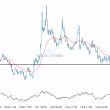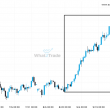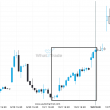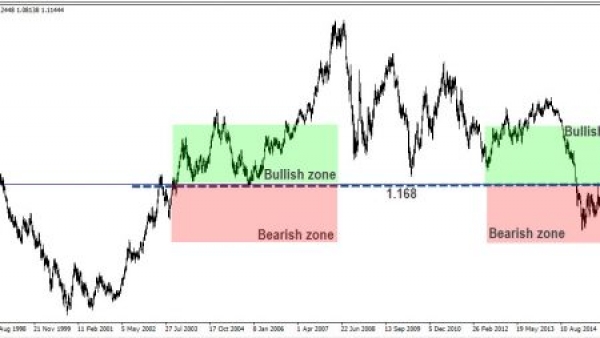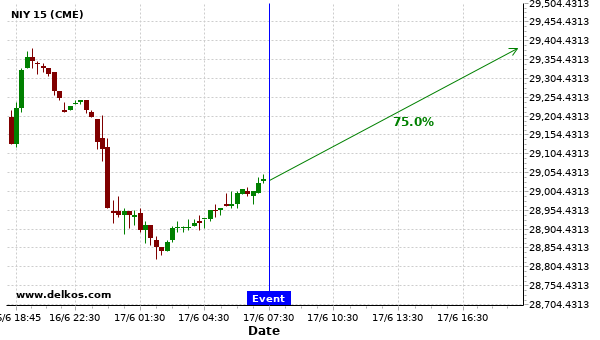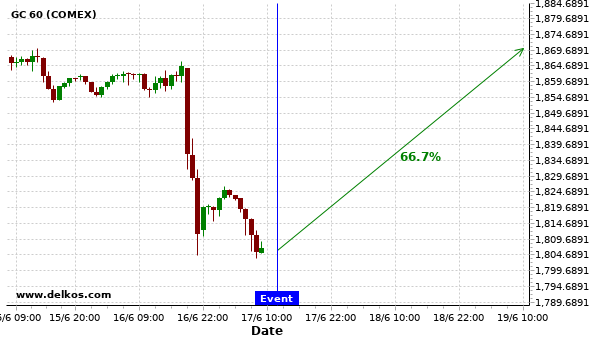Correlation strategies appeal to forex traders because it removes the stress associated with picking market direction. When two correlated pairs diverge from one another, the idea is to simply buy one pair and sell the other.
What are correlated currency pairs?
Correlation offers a mathematical probability of two “time series” moving in the same direction. Applying the idea to forex, it means that we need to pick two currency pairs. EURUSD and USDCHF are two popular choices due to their extremely high correlation, so we’ll use those.
Now we ask a simple question: “If the EURUSD rises, what is the probability of that the USDCHF will also rise”? Our calculations will pump out a simple a number between -1 and +1. +1 means that that if Currency A rose in value, then it is 100% certain that Currency B rose in value. -1 means that if Currency A increased in value, then it is 100% certain that Currency B decreased in value. A value of 0 means that the movement of Currency A exercises no effect at all on Currency B.
Traders generally consider a correlation significant whenever the number is greater than 70%. EURUSD and USDCHF are so popular because they hold the strongest correlation among the major currency pairs. When market volatility was very low a few years ago, it was around -93%. Today, the correlation tends to hang around -80%. The European debt problems and Swiss National Bank’s intervention have a lot to do with the decrease in this number. Their trading relationships are far less stable.
Risks of correlation strategies
Let’s move back into familiar territory with my favorite example, the moving average. If you take the average over the past 20 bars, you know from experience that the average will differ if you study a 50 period versus a 200 period average. If you look at the average on a 5 minute chart versus an hourly chart, the number will vary yet again.
The take-away here is that the correlations work the same way. The correlation between EURUSD and USDCHF might even be positive if you look at a short enough time scale. As you back away in time, you will notice that the further out you go, the more steady the correlation numbers look. If the weekly correlation of the EURUSD and USDCHF is -80%, you would expect the numbers to get more wild and erratic as you scale all the way down to a tick chart.
The same problem with the moving average also appears. Studying the correlation over 50 periods provides a responsive number, but it is also far less consistent than the 200 period correlation. What a short period gains in responsiveness, it loses in stability.
You should also consider whether the correlation that you’re studying makes fundamental sense. Just because the temperature change in Mongolia predicted the direction of USDJPY for the past week does not make it a good idea to use in the future. The same goes with pair trading.
EURUSD and USDCHF should be highly correlated for two reasons. They both contain the same currency in the pair (USD), which half weights them with the same instrument. Additionally, the EUR and CHF both have strong trading relationships with the US. You would expect both the Euro Zone and Switzerland to share a need for buying and selling US dollars. They need them for buying oil, importing and exporting to the US, etc. Anyone with a cursory understanding of macroeconomics could explain why this relationship makes sense.
Correlation traders typically settle on pairs that share a common currency. The EURUSD and USDCHF trade both share the US dollar. When you buy EURUSD and buy USDCHF, you are really:
Buying EUR and selling USDBuying USD and selling CHF
Notice that the USD cancels itself out. What you are really doing is buying EUR and selling CHF. This is commonly known as the EURCHF pair. Assuming that the spread is not outrageous, it makes more sense to simply buy or sell EURCHF directly rather than going through the convoluted process of managing two open trades.
If you decide to pursue the two pair approach, you must consider the need to balance the trade sizes against each other. Using standard lots as the example, 100,000 EUR is 137,500 USD. 100,000 USD is 90,900 CHF. If you buy one standard lot of EURUSD, you are buying $137,500 of it. When you buy a standard lot of USDCHF, you are only buying $100,000.
$137,500 obviously does not equal $100,000. Unless you intentionally decided to trade different sizes, you may want to consider equalizing them.
Solve for x:
€100,000 / $137,500 = x * (₣90,900/$100,000)
x = €100,000 / ₣90,00 * $100,000 / $137,500 = 0.803
You would need your EURUSD trade to be 80% of the size of the USDCHF trade.
What correlation is not
Correlation only provides insight into the probability of direction. It says absolutely nothing about the strength of a particular move. A few months ago the USDCHF climbed 1,000 points in value within a single day. The EURUSD only moved a few hundred pips. The USDCHF moved dramatically further than the EURUSD both in terms of pips, but more importantly, as a percentage of price.
Consider if you were short EURUSD that day and short USDCHF. You lost a ton of money. On the flip side, if you were long EURUSD and long USDCHF, then you got lucky and earned the move. Regardless of what happened, correlation told you nothing about the outcome when they move in the same direction. For that reason, I prefer looking at a less intuitive method called cointegration.
Cointegration
Conintegration turns the problem on its head. Rather than asking whether or not two pairs move in the same direction, it asks how likely are they to remain a certain distance apart. Naturally, that distance tends to vary with time. What you want the cointegration formula to tell you is how likely two pairs are to come back to a standard distance. If you see two pairs spread unusually far apart and the numbers tell you that they usually come back together, then it makes sense to consider a pair trade.

